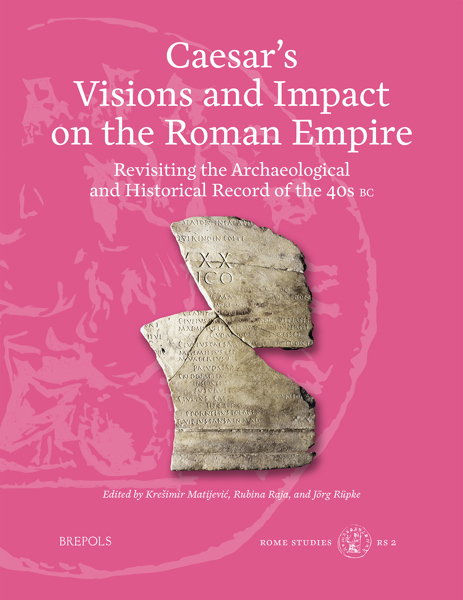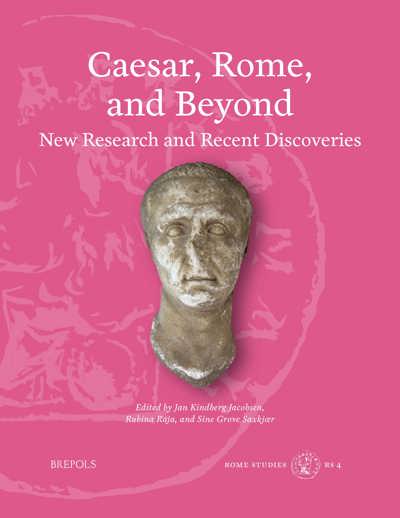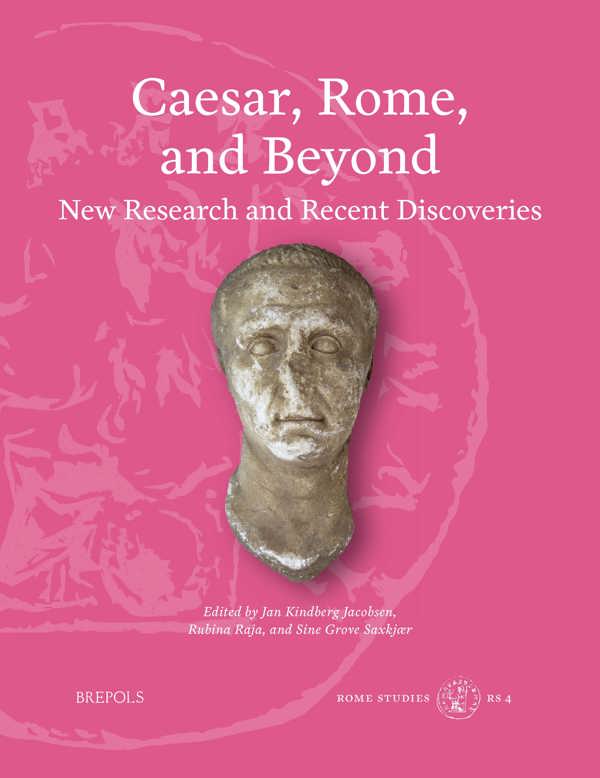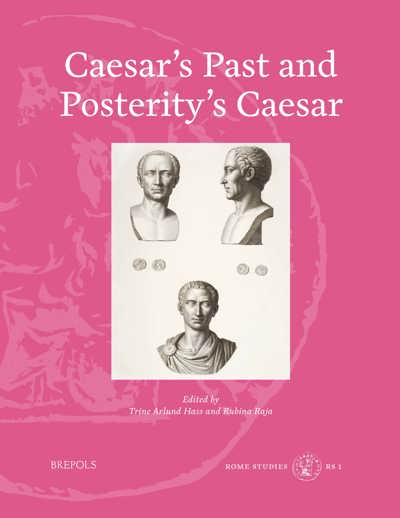
Caesar, Rome and Beyond
New Research and Recent Discoveries
Jan Kindberg Jacobsen, Rubina Raja, Sine Grove Saxkjær (eds)
- Pages: xvi + 234 p.
- Size:216 x 280 mm
- Illustrations:85 b/w, 43 col., 2 tables b/w., 12 maps b/w, 12 maps color
- Language(s):English, Italian
- Publication Year:2023
- € 90,00 EXCL. VAT RETAIL PRICE
- ISBN: 978-2-503-60344-5
- Paperback
- Available
"Indem sich die Herausgebenden der verdienstvollen Aufgabe angenommen haben, renommierte Wissenschaftler* innen zusammenzubringen, entstand eine kompakte Auswahl aktueller und stimulierender Forschungen zu Caesar und seiner Zeit." (Maximiliane Gindele, in Historische Zeitschrift, 319/3, 2024, p. 671)
Jan Kindberg Jacobsen is curator of ancient art at the Ny Carlsberg Glyptotek, Copenhagen. He directs the Danish-Italian excavations of Caesar’s Forum in Rome.
Rubina Raja is professor of classical archaeology and director of Centre for Urban Network Evolutions. She co-directs the Danish-Italian excavations of Caesar’s Forum in Rome.
Sine Grove Saxkjær is a postdoctoral researcher at Centre for Urban Network Evolutions. Her project ‘Urban Ethnicities: Centre and Periphery in Ancient Latium’ collaborates with the Danish-Italian excavations of Caesar’s Forum in Rome.
In the Late Republican period, Rome underwent monumental changes. Within the city, numerous building projects were undertaken by the wealthy and politically powerful as they jostled for power, while further afield, wars were fought and Rome’s authority gradually expanded into new territories. One of the key players in this field was Julius Caesar, who took advantage of the fluid and fast-changing political and military alliances to position himself in the centre of power. During this time, he became the first to design a forum — the Forum Iulium, now known as Caesar’s Forum — in his family’s name.
Today, this site, in the very heart of Rome, is home to The Caesar’s Forum Project, where excavations have yielded new knowledge about both the long history of Rome, and the broader context of its global history and cultural heritage. Taking this project as its starting point, this volume draws together scholars working both on the excavations, and on Caesar more generally, to shed new light on the often enigmatic figure of Julius Caesar. The chapters gathered here offer insights into remains and sources from both the time of Caesar and from later periods, giving new perspectives not only on his life and death, but also on the central role that he has ever since continued to play in historiography since.
List of Illustrations
Introduction
1. Caesar, Rome and Beyond: New and Old Sources
Jan Kindberg Jacobsen, Rubina Raja, and Sine Grove Saxkjær
Caesar and Rome
2. Sensing Change: Late Republican Architecture in Rome
Penelope J. E. Davies
3. Find a Lover in Augustan Rome: How Ovid’s Ars amatoria Became a Criticism of Augustus’s Moral Politics
Eric M. Moormann
The Archaeology of Caesar’s Military Ventures
4. The Archaeology of Julius Caesar: New Research on the Gallic Wars
Nico Roymans and Manuel Fernández-Götz
5. Across the Rubicon to Rome: New Elements for the Identification of Caesar’s Military Camp
Annalisa Pozzi and Christian Tassinari
6. Caesar in Britain: Britain in Rome
A. P. Fitzpatrick and Colin Haselgrove
New Discoveries
7. Excavating the Forum Iulium: The Danish-Italian Excavations between Longue Durée Perspectives and High-Definition Narratives
Laura di Siena, Jan Kindberg Jacobsen, Gloria Mittica, Giovanni Murro, Claudio Parisi Presicce, Rubina Raja, Sine Grove Saxkjær, and Massimo Vitti
8. The So-Called Aquinum Portrait of Julius Caesar: From its Discovery to Research Development
Giuseppe Ceraudo
9. The So-Called ‘Caesar’ of Aquinum: A Preliminary Analysis
Giovanni Murro
10. L’immaginario cesariano tra visioni classicistiche e ideologie nazionalistiche: il caso di un ritratto emerso dalle acque del Rodano
Mario Denti
New Contributions on Caesar and Historiography
11. Julius Caesar and the Forum Caesaris: World History, Historiography, and Reception Investigated through Danish Biographies of Caesar from the Early Twentieth Century
Trine Arlund Hass and Rubina Raja
12. Past Research Perspectives and Narrated Space: The Incident When Caesar Did Not Rise for the Senate, according to Georg Brandes (1918) and Hartvig Frisch (1942)
Trine Arlund Hass
Index


